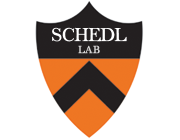Xenotransplantation exposes the etiology of azoospermia factor (AZF) induced male sterility.
Publication Year
2015
Type
Journal Article
Abstract
Ramathal et al. have employed an elegant xenotransplantation technique to study the fate of human induced pluripotent stem cells (hiPSCs) from fertile males and from males carrying Y chromosome deletions of the azoospermia factor (AZF) region. When placed in a mouse testis niche, hiPSCs from fertile males differentiate into germ cell-like cells (GCLCs). Highlighting the crucial role of cell autonomous factors in male sterility, hiPSCs derived from azoospermic males prove to be less successful under similar circumstances. Their studies argue that the agametic "Sertoli cell only" phenotype of two of the AZF deletions likely arises from a defect in the maintenance of germline stem cells (GSCs) rather than from a defect in their specification. These observations underscore the importance of the dialogue between the somatic niche and its inhabitant stem cells, and open up interesting questions concerning the functioning of the somatic niche and how it communicates to the GSCs.
Keywords
Journal
Bioessays
Volume
37
Issue
3
Pages
278-83
Date Published
03/2015
ISSN Number
1521-1878
Alternate Journal
Bioessays
PMID
25524208

